George Gibbs of Bristol was a good example of a man who built his business in the provinces and prospered, gaining a wealthy and knowledgeable clientele and forging a reputation, particularly as a rifle maker of the highest quality.
He may be best known for the Gibbs Farquharson rifle, which was always well regarded and today has something of a cult following. However, he also made a contribution to the breech-loading shotgun as it developed from hammer to hammerless action with his patent No. 284 of 24th January 1873.
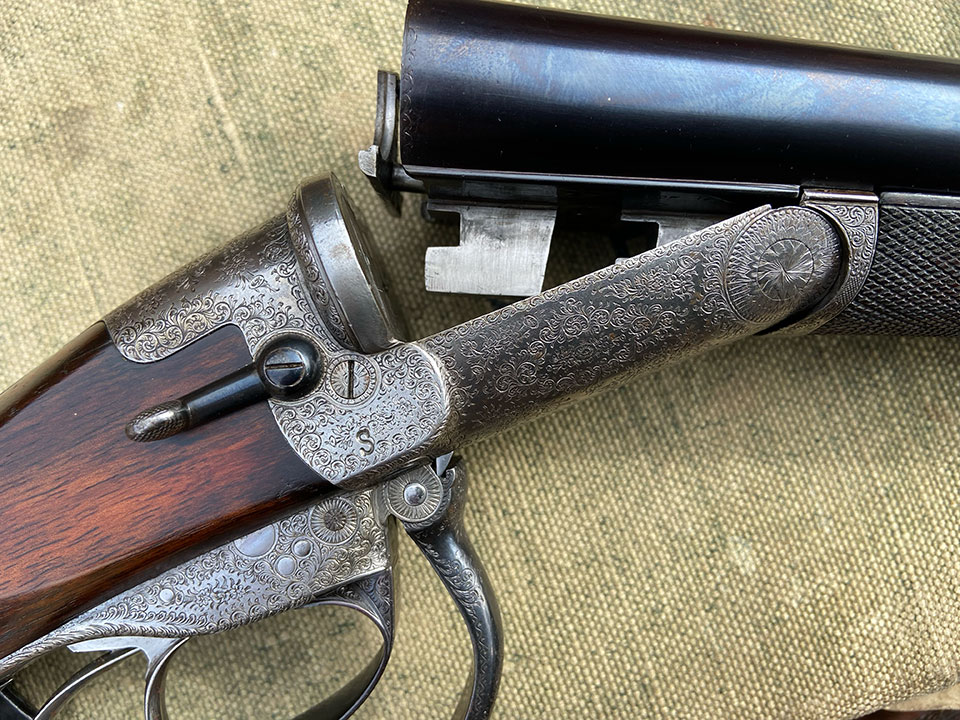
This 12-bore snap under-lever gun is made to that patent. It should be noted that, though the stamp says ‘Gibbs & Pitt Patent No.246’, the number is the patent use number, not the patent number. This can be confusing, if you don’t know, and lead to fruitless searches for a patent No. 246.
This gun, therefore, is the 246th to be made to patent No. 284.
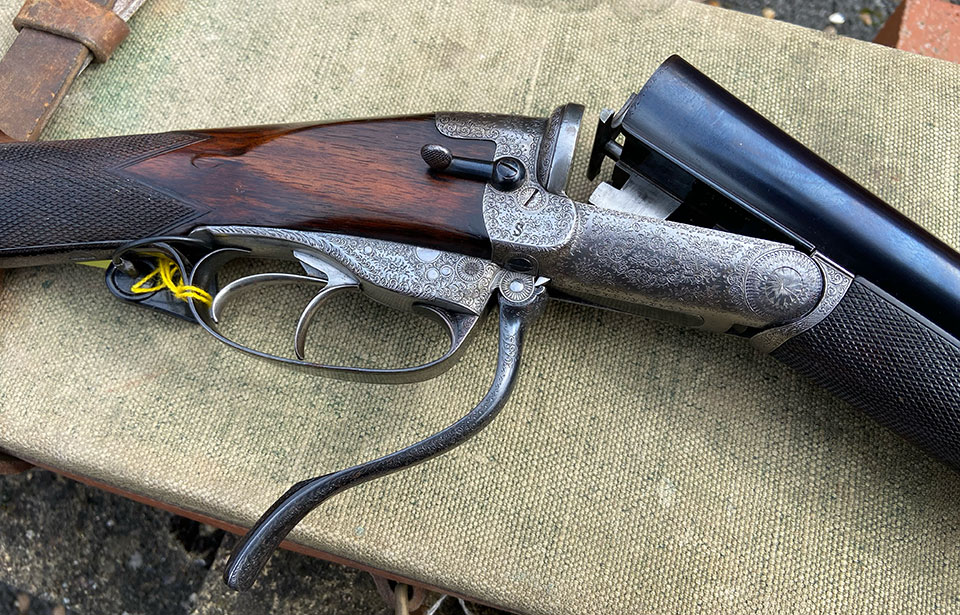
It dates to around 1883 and it has 29” barrels (replacements) and a 14” stock. Overall weight is 6lbs 8oz. The safety, placed on the side, is manual.
George Gibbs and Thomas Pitt traded from premises in Bristol until the late 1880s, when they appear to have split their partnership and gone their separate ways. In 1885 they were at 29, Corn Street and also at 43 High Street.
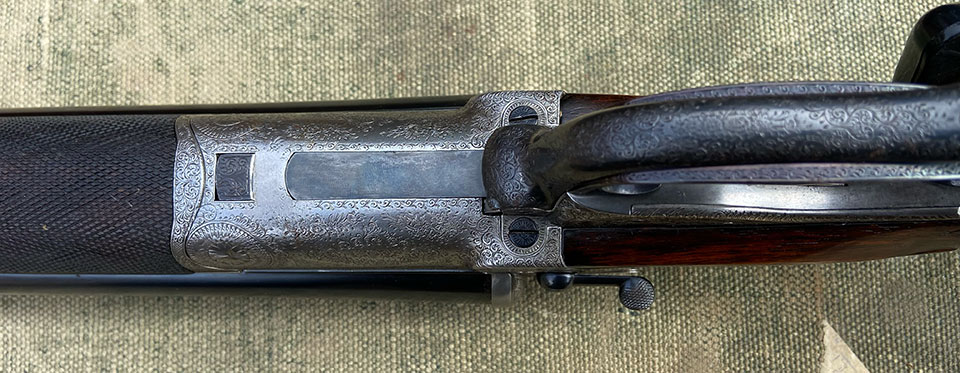
This, their most famous action, is a patent for a hammerless lever-cocked gun, though it also contains specification for a self-cocking hammer gun (it is not unusual for a patent filing to cover several different ideas).
The action is cocked by the lever. There are two notches in the tumblers. A hinged rearward projection on the locking bolt pushes these and effects cocking of the tumblers as the gun is opened. The bolt is returned by spring pressure, not mechanically by the lever.
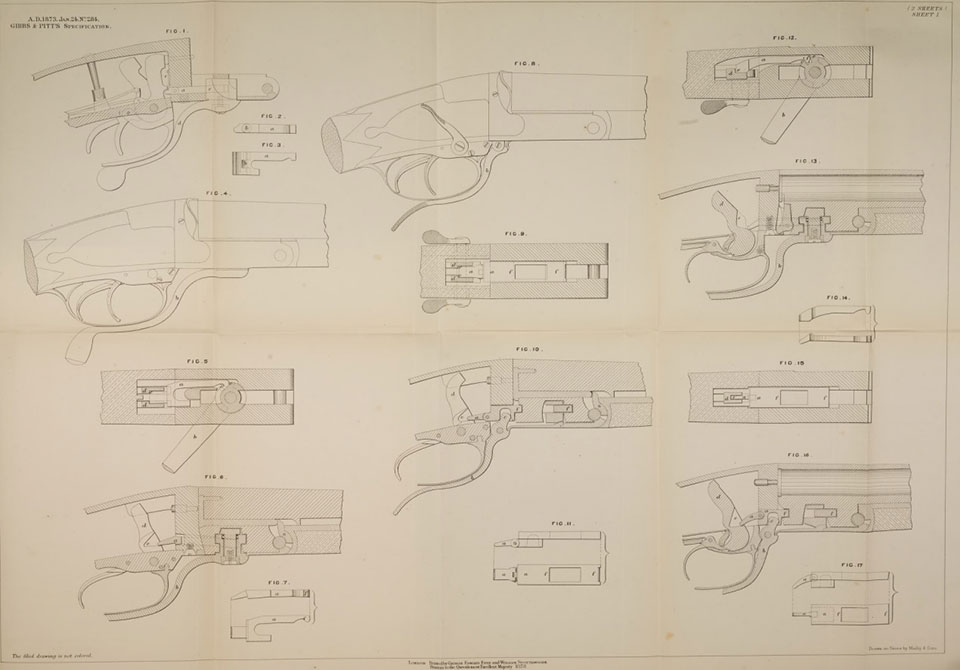
It is curious that a gun as apparently obsolete as this was made in the early 1880s, when Purdey was already offering Beesley’s 1880 patent self-opener and Holland & Holland introduced the second model ‘Royal’. However, communication in the late Victorian era was not what it is today and it took time for conventions to solidify and for sportsmen around the country to catch-on to what was going on elsewhere.
It is also true that many customers were still buying hammer guns in the early 1880s.
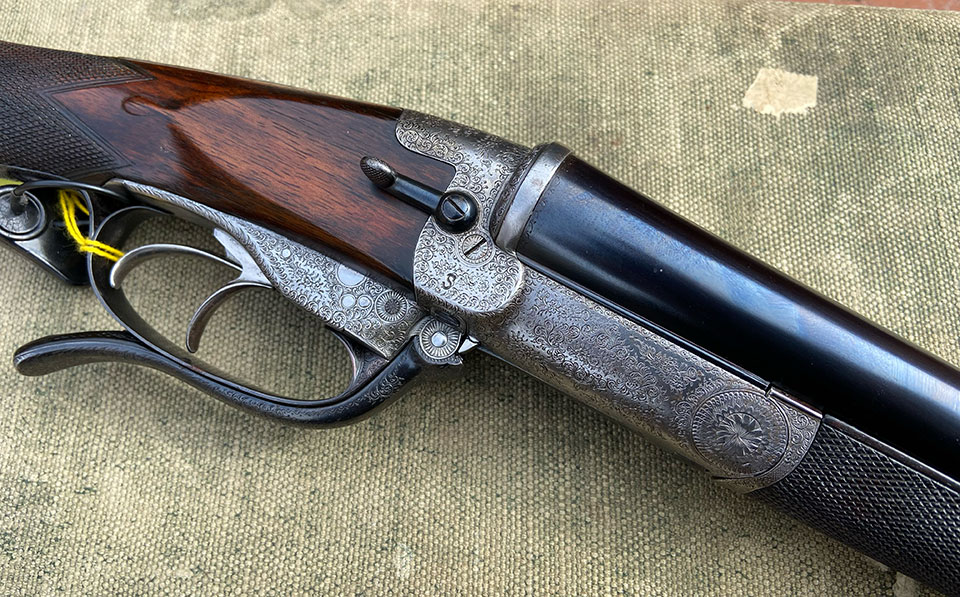
In truth, even the very idea of lever-cocking was made obsolete only two years after Gibbs and Pitt patented this action, when Needham, then Anson & Deeley demonstrated the greater efficiency of a barrel-cocking plan with their respective 1874 and 1875 patents.
The gun is very well made, with meticulous attention paid to the shaping of the metal parts. The engineering geometry is beautifully aligned and demonstrable with every integrated movement of the limbs of the action when the gun is opened and closed.
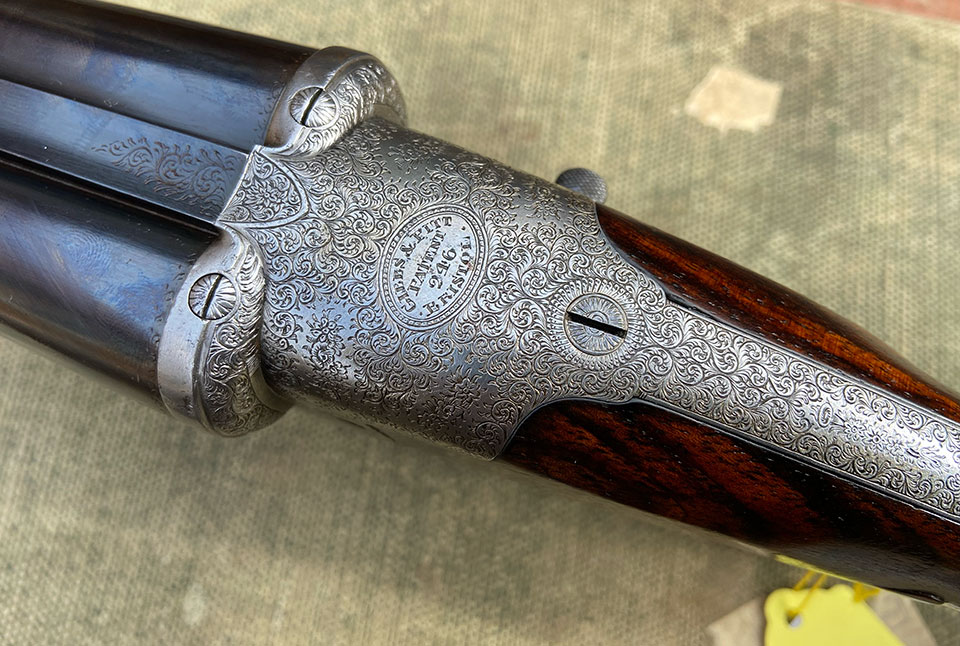
This particular example is made to conform to the second pattern of the first patent. Mark Crudgington (current owner of gerorge Gibbs) believes that areound 10,000 were made if examples of all three types are included. He commented "Archaic when looked at today as the bolt is not fully controlled by the lever , only withdrawn by it and returned under spring pressure only . I still have some of the Jigs used to make them".
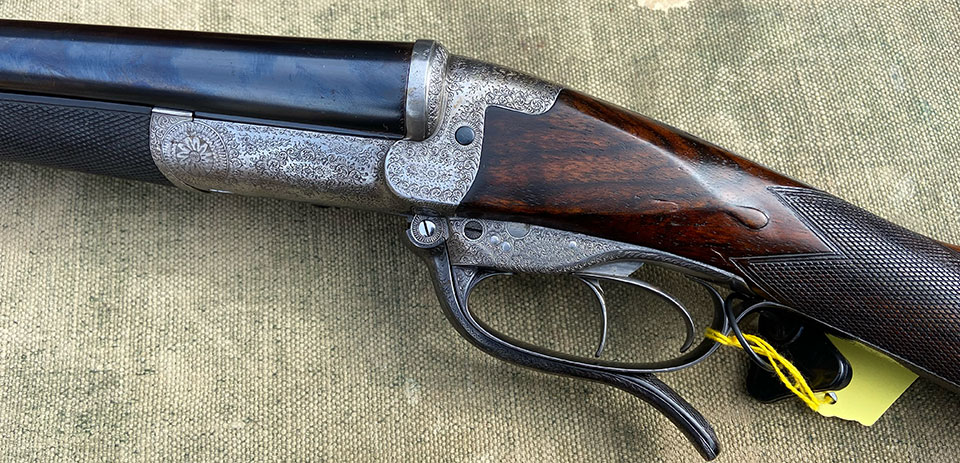
Published by Vintage Guns Ltd on (modified )




